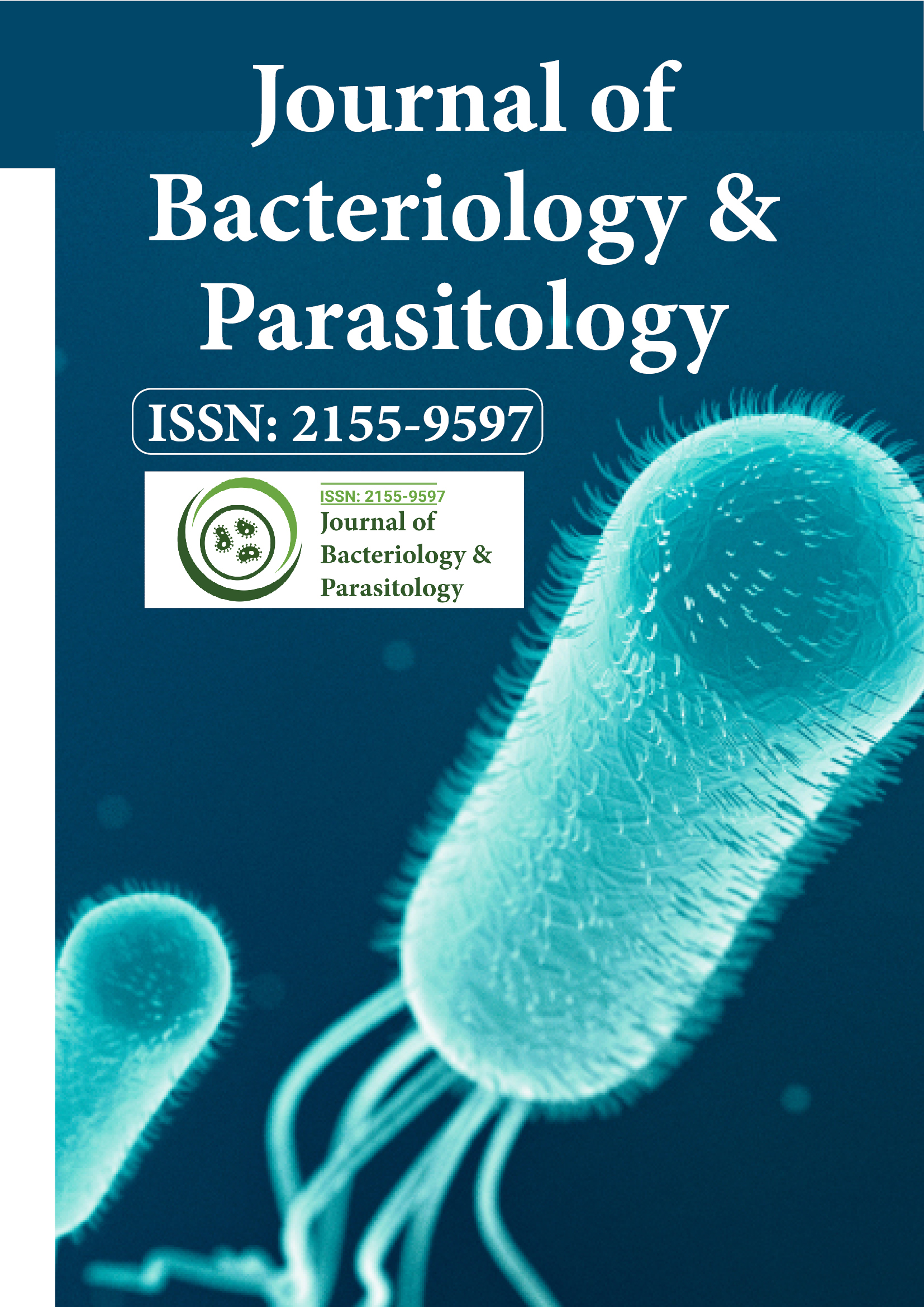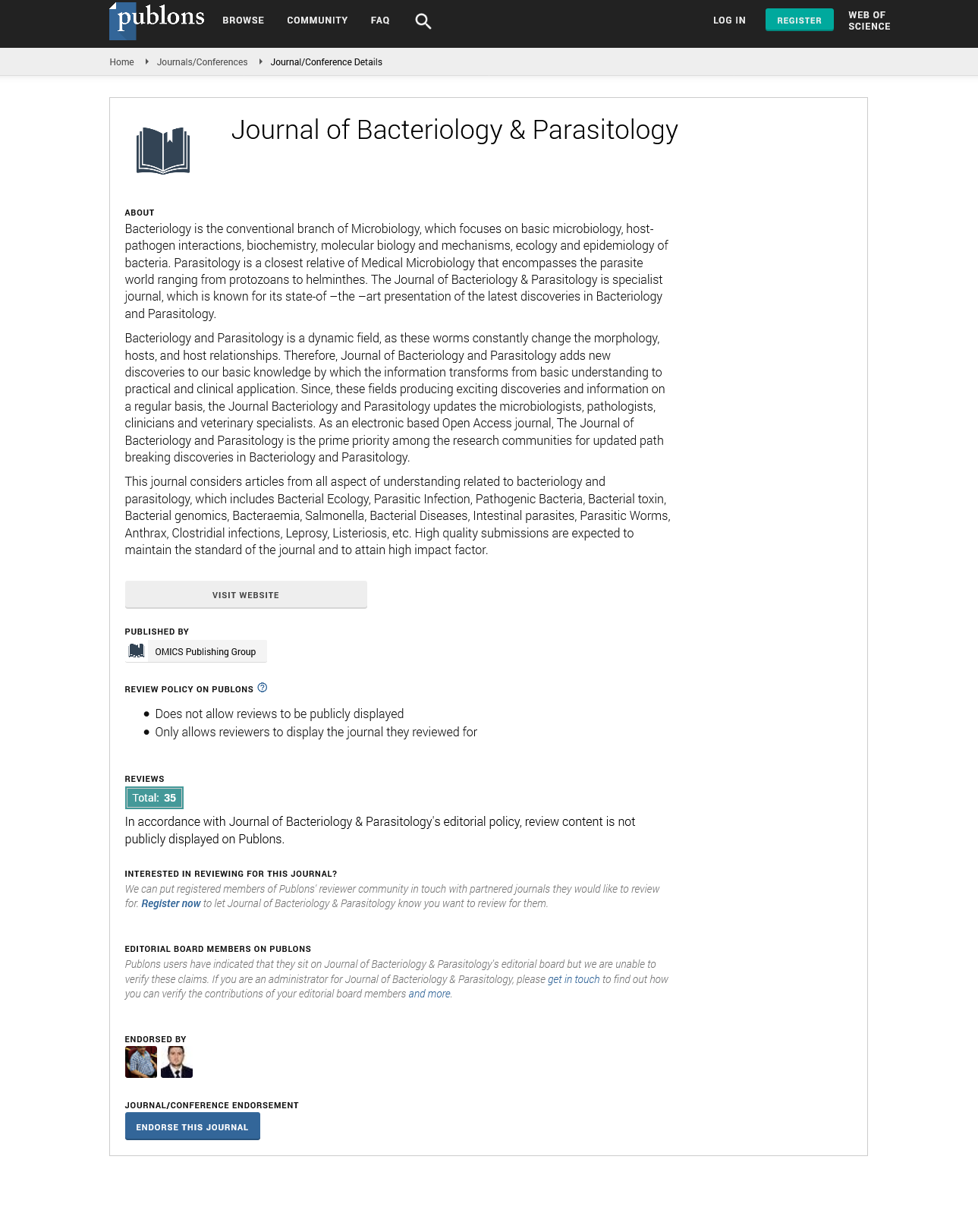Indexed In
- Open J Gate
- Genamics JournalSeek
- Academic Keys
- JournalTOCs
- ResearchBible
- Ulrich's Periodicals Directory
- Access to Global Online Research in Agriculture (AGORA)
- Electronic Journals Library
- RefSeek
- Hamdard University
- EBSCO A-Z
- OCLC- WorldCat
- SWB online catalog
- Virtual Library of Biology (vifabio)
- Publons
- MIAR
- Geneva Foundation for Medical Education and Research
- Euro Pub
- Google Scholar
Useful Links
Share This Page
Journal Flyer

Open Access Journals
- Agri and Aquaculture
- Biochemistry
- Bioinformatics & Systems Biology
- Business & Management
- Chemistry
- Clinical Sciences
- Engineering
- Food & Nutrition
- General Science
- Genetics & Molecular Biology
- Immunology & Microbiology
- Medical Sciences
- Neuroscience & Psychology
- Nursing & Health Care
- Pharmaceutical Sciences
Commentary - (2025) Volume 16, Issue 2
Antibiotic Resistance in Bacterial Pathogens: Evolution, Spread, and Solutions
DESCRIPTION*Received: 24-Mar-2025, Manuscript No. JBP-25-29943 ; Editor assigned: 26-Mar-2025, Pre QC No. JBP-25-29943 ; Reviewed: 09-Apr-2025, QC No. JBP-25-29943 ; Revised: 16-Apr-2025, Manuscript No. JBP-25-29943 ; Published: 23-Apr-2025, DOI: 10.35248/2155-9597.25.16.537
Description
Bacterial pathogens have evolved ways to survive antibiotic treatments that once were effective. Resistance arises by mutation of existing genes, acquisition of new genes via plasmids, transposons or bacteriophages, or changes in regulation of expression. For example, Staphylococcus aureus strains resistant to methicillin produce altered penicillinâ?binding proteins; Enterobacteriaceae may carry betaâ?lactamases that degrade carbapenem antibiotics; Pseudomonas aeruginosa can overexpress efflux pumps that expel drugs from inside bacterial cells. Each mechanism reduces drug effectiveness and complicates treatment.
Spread of resistant bacteria occurs in clinical settings, agricultural environments, and community spaces. Use of antibiotics in livestock encourages selection of resistant strains that can pass to humans via food or water. Hospitals, with high antibiotic usage and dense patient populations, are breeding sites for multidrug-resistant organisms. Insufficient sanitation or lack of strict infection control measures allows transfer between patients or surfaces that act as reservoirs for pathogens.
Predicting which bacteria will resist certain drugs requires monitoring gene prevalence and patterns of drug use. Laboratory surveillance including sensitivity testing, molecular detection of resistance genes, and epidemiology of patient outcomes are essential. Where results show high resistance, clinicians avoid standard drugs and choose alternatives—even if more expensive or with more side-effects. Stewardship programs promote rational prescription of antibiotics, limit overuse, discourage self-medication, and omit unnecessary prophylactic courses.
Treatment protocols must adapt. Combination therapy may be more effective: using two drugs with different modes of action reduces the chance bacteria survive both. Old drugs sometimes regain usefulness when resistance mechanisms impose a fitness cost on bacteria; rotating among drug classes can reduce selective pressure. Development of new antibiotics remains a long process; many promising compounds under trial target cell wall synthesis, protein synthesis, or DNA replication. Some agents may evade known resistance mechanisms by avoiding recognition by existing enzymes.
Prevention of resistance spread involves cleaning surfaces in hospitals, washing hands, using sterile instruments, and isolating infected patients when needed. In agriculture, reducing antibiotic use for growth promotion, employing hygiene in animal rearing, and preventing infections in livestock lowers the requirement for antibiotic treatment. Proper disposal of pharmaceutical waste and monitoring of environmental antibiotic residues reduce exposure of environmental bacteria to low drug concentrations, which otherwise select for resistance.
Genetic studies show that resistance genes often cluster in mobile genetic elements; plasmids may carry several resistance determinants, moving between unrelated species. Horizontal transfer in soil, water, or inside the human microbiome spreads genes widely. Bacteria in biofilms often resist antibiotics more than free-living cells: reduced penetration, slow growth, and presence of persister cells all contribute.
Conclusion
Bacterial resistance to antibiotics is a growing problem driven by evolutionary capacity of microbes, misuse of drugs, and insufficient control measures. A combination of surveillance, prudent drug use, hygiene, novel therapies and public policy is required to maintain ability to treat bacterial infections successfully. Emerging tools include phage therapy: bacteriophages that infect and kill bacteria may act where antibiotics fail. Alternatives such as antimicrobial peptides, inhibitors of resistance enzymes, or agents that disrupt biofilms are under study. Diagnostic tests that quickly identify resistance profile at point of care allow treatment to target resistant bacteria early, reducing use of broad spectrum drugs which tend to select for resistance.
Citation: Huang E (2025). Antibiotic Resistance in Bacterial Pathogens: Evolution, Spread, and Solutions, Treatment. J Bacteriol Parasitol. 16:537.
Copyright: © 2025 Huang E. This is an open-access article distributed under the terms of the Creative Commons Attribution License, which permits unrestricted use, distribution and reproduction in any medium, provided the original author and source are credited

